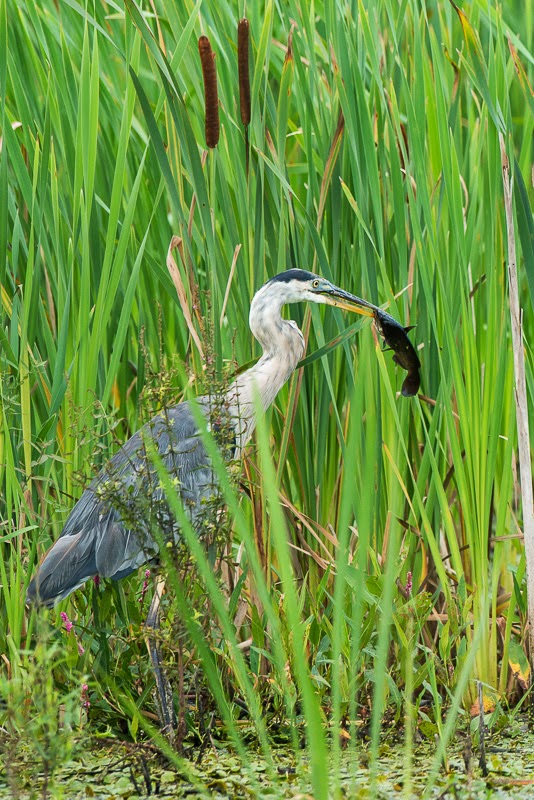
August 15 is the average beginning of the hay fever season here in the Finger Lakes. Once again, I am hearing people (including a local TV meteorologist) assign the cause as Goldenrod. He may know the weather but he isn't knowledgeable about this one. The cause of most hay fever reactions is Ragweed. It is a wind-born pollinator with a drab green flower. It is the wind that carries it into my house and dogs me until the first killing frost.
Here is a sample found on a walk this evening. Unlike Goldenrod, it has no colorful blooms. There is no evolutionary benefit to putting energy into creating bright color which would attract insects. Insects play no role.
The Ragweed leaf form is clearly different from Goldenrod. Note the deeply lobed form that is somewhat irregular.
On my walk to find examples of both, I noticed that most Ragweed was growing along the roadside where it had been mowed several times. There was no Goldenrod present. Where I found Goldenrod, there was virtually no Ragweed. Could the mowing give the Ragweed an edge over the grasses? Or, could Goldenrod thwart the growth of the Ragweed?

So, here is a typical Goldenrod plant, already in bloom. The leaves are not indented, but mildly toothed. (There are a goodly number of species that vary in the leaf details.) The profuse blooms of yellow certainly stand out to any insect pollinator. Unlike Ragweed, this plant holds on to its pollen until the insect arrives. The pollen does not float around in the air to reach us in the quantity coming from Ragweed.
While many seem to wage war on Goldenrod, I have introduced it. Mixed with red and violet varieties of Monarda, it makes for a colorful summer combination. I find it easy after a rain to pull any excess of Goldenrod. (I also collect and discard the seed heads to control its spread.)
I recall a later summer walk in my neighborhood where I saw a lady excavating quantities of Goldenrod to combat her hay fever. Could she actually be promoting a new site for Ragweed? Sadly, she was not open to the idea that Goldenrod was not the source of her misery.
If not before, now you know the real cause of hay fever. Sadly, I know of no practical way to reduce Ragweed, and on the flip side, its seeds are reported to be an important seed for small birds. That's not much comfort to me.
And yes, I already have watery eyes and the inevitable congestion. That's just one reason that I love the arrival of autumn.
Paul





















